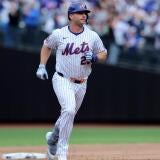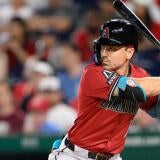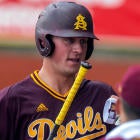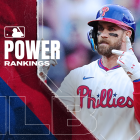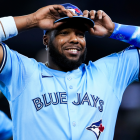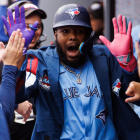Major League Baseball and the MLB Players Association are currently working through several issues and the logistics of playing the 2020 season following the COVID-19 pandemic. The hope is spring training can resume in mid-June with Opening Day taking place in early July. MLB is planning for an 82-game season and an expanded postseason.
The regular season remains up in the air but plans have been finalized for one important MLB event: the 2020 amateur draft. Earlier this month MLB decided to conduct a five-round draft on June 10-11. MLB proposed a 10-round draft with severe spending restrictions in rounds 6-10, which the MLBPA rejected. The draft typically runs 40 rounds. The league shortened it to five rounds this year to cut costs during the pandemic. To say the decision is not being received well would be an understatement.
"For any ownership group that supports this course of action as advisable or, frankly, is so cash-strapped that this mid-six-figure savings is a financial necessity, they should do everyone a favor, including their fellow owners, and sell their franchises," veteran agent Jeff Berry recently told the Associated Press. "Does anyone think it's that big of an ethical jump from hijacking the draft, tanking and service manipulation to hidden cameras and banging on trash cans? All those behaviors and attitudes, they're not analytic or intelligent or efficient, they're just unethical, and they reveal a lack of respect for players and fans."
Last summer 1,217 players were selected in the amateur draft. This year only 160 players will be selected. Hundreds of players who would have turned pro will instead go to college (or back to college) and hope the draft rules are more favorable in the future. Individual slot values for this year's draft will remain at 2019 levels (there's usually a 3-5 percent increase) and players will only receive $100,000 upfront. The rest of their bonus will be paid in two equal installments on July 1, 2021 and July 1, 2022.
This year's draft was originally scheduled to take place in Omaha, Nebraska, to coincide with the start of the College World Series. That won't happen. The College World Series has been canceled and MLB will instead conduct the draft remotely via video conference, similar to last month's NFL draft. Amateur baseball has been shut down for weeks, so teams will have to rely on past information heavily this draft. I expect it to be a college-heavy draft as a result.
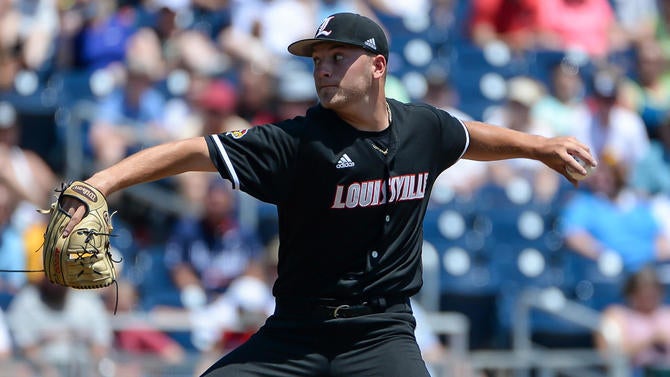
Unlike the NBA and NHL, there is no lottery for the MLB draft. The draft order is set at the reverse order of the previous year's standings, so the Tigers hold the No. 1 pick in 2020 after losing 114 games in 2019. This is the third time Detroit has held the top pick. They selected Rice closer Matt Anderson with the No. 1 pick in 1997 and Auburn righty Casey Mize with the No. 1 pick in 2018. Mize is now one of the top prospects in the game.
"I would say that we have a good history from last year to the present day as far as seeing players," Tigers GM Al Avila told MLB.com's Jason Beck in March. "I know we already have a full list of all the guys that are pertinent to the draft for us. Obviously, you'd like to see them play more, but I would say if the draft were tomorrow, we'd be prepared, for sure."
Every team is given a set bonus pool for draft spending each summer, and savings from a below-slot bonus with one pick can be used for an over-slot bonus with another pick. The penalties for excessive spending are harsh enough (tax on overage, forfeiting a future first rounder, etc.) that the bonus pool effectively acts as a salary cap. Here are this year's five largest bonus pools:
- Baltimore Orioles: $13,894,300
- Detroit Tigers: $13,325,700
- Kansas City Royals: $12,521,300
- Miami Marlins: $12,016,900
- Pittsburgh Pirates: $11,154,500
The O's hold the No. 2 pick and they effectively won the competitive balance lottery, which awards extra draft picks to small-market teams. Holding the highest competitive balance pick (No. 30 overall) pushes Baltimore's total bonus pool just north of Detroit's. The Astros, who were stripped of their first- and second-round picks as part of the sign-stealing scandal punishment, have the smallest bonus pool at $2,202,600 as a result.
R.J. Anderson recently ranked the top 25 pitchers and the top 25 position players in the 2020 draft class. He also ranked the top 50 draft prospects overall. It has been one month since our first 2020 MLB mock draft. Although no amateur games have been played since then, the draft board has changed a bit as teams begin to zero in on targets. Here is our latest 2020 MLB mock draft based on the latest rumors and reporting. We'll have two more updates between now and draft day.
| 1 | |
Pick: 1B Spencer Torkelson, Arizona State ($8,415,300 slot value) Torkelson and Vanderbilt infielder Austin Martin are the top two players in the draft class and either would be a fine selection at No. 1. This pick could very well come down to money. The Tigers could go with whichever guy is most willing to take a below-slot bonus. Below-slot here could still equal more money than slot at the No. 2 pick, and there's a certain prestige to being the No. 1 pick in the draft. Who wouldn't want to be the top pick? Detroit could leverage Martin and Torkelson against each other. The consensus is Torkelson is the safest prospect in the draft class and a future middle-of-the-order masher. The righty hitting, righty throwing first baseman is a risky profile, historically, and Torkelson would be the first right-right college first baseman to ever go No. 1 overall. It seems Detroit is leaning Torkelson right now, though this is hardly set in stone with the draft three weeks away. The Tigers have a pitcher-heavy farm system and either Martin or Torkelson would fit nicely. Our R.J. Anderson ranked Torkelson as the No. 2 prospect in the draft class. April 15 mock pick: SS Austin Martin, Vanderbilt | |
| 2 | |
Pick: SS Austin Martin, Vanderbilt ($7,789,900 slot value) In a sense, the Orioles have the easiest decision in the draft. They'll simply take whichever one of Martin or Torkelson is still on the board. O's GM Mike Elias had great success manipulating the bonus pool when he ran drafts for the Astros -- he pioneered the practice of saving money with a below-slot pick early so they could sign a top talent who falls to a later pick -- though the belief is that won't happen this year. Martin is the best pure hitter in the draft and he can play just about anywhere, so he provides the positional flexibility modern front offices love. Our R.J. Anderson ranked Martin as the No. 1 prospect in the draft class. April 15 mock pick: 2B Nick Gonzales, New Mexico State | |
| 3 | |
Pick: LHP Asa Lacy, Texas A&M ($7,221,200 slot value) Lacy stands out as the best pitching prospect in a pitching-heavy draft class. He's a four-pitch lefty who checks every analytical (velocity, spin, etc.) and not-so-analytical (makeup, work ethic, etc.) box. The Marlins would likely jump on either Martin or Torkelson here, but since neither is on the board in our mock draft, Lacy is the guy. He emerged as the top pitcher in the draft class before amateur baseball shut down and is the best player available at this selection. Our R.J. Anderson ranked Lacy as the No. 3 prospect in the draft class. April 15 mock pick: 1B Spencer Torkelson, Arizona State | |
| 4 | |
Pick: RHP Emerson Hancock, Georgia ($6,664,000 slot value) The Royals have been college heavy in recent years and Hancock fits their preferred profile as a well-known pitcher with upside. Hancock came into the year as a candidate to go No. 1 overall, but an inconsistent spring finds him behind the two top hitters and Lacy. He's still an excellent prospect -- our R.J. Anderson calls Hancock a "high-quality pitcher who ought to hold down a big-league rotation spot for years to come, beginning sooner than later" -- and a natural fit at No. 4. R.J. ranked Hancock as the No. 4 prospect in the draft class. April 15 mock pick: RHP Emerson Hancock, Georgia | |
| 5 | |
Pick: RHP Max Meyer, Minnesota ($6,180,700 slot value) The board opens up after the top four selections. Meyer came into the spring as a possible late first-round pick and now there's basically zero chance he makes it out of the top 10. He has the best slider in the draft class and, if MLB goes with 30-man active rosters and 20-man taxi squads following the shutdown as rumored, it's not out of the question that he could pitch in the show this year. The Blue Jays have been college and analytics heavy in recent drafts and the Murder Hornet fits the trend. Our R.J. Anderson ranked Meyer as the No. 5 prospect in the draft class. April 15 mock pick: LHP Asa Lacy, Texas A&M | |
| 6 | |
Pick: LHP Reid Detmers, Louisville ($5,742,900 slot value) It's very likely to be a college player here as the Mariners look to accelerate their rebuild and land a player with a similar ETA as top prospects Jarred Kelenic and Julio Rodriguez. Detmers does not have the highest upside in the draft class but he's extremely polished and, as long as he stays healthy, a relatively safe bet to carve out a long career in the middle of a big-league rotation. If any of the players who came off the board with the top five picks falls here, Seattle would pounce. It should be noted our mock draft has this becoming the first draft in history to start with six straight college players. Our R.J. Anderson ranked Detmers as the No. 8 prospect in the draft class. April 15 mock pick: OF Garrett Mitchell, UCLA | |
| 7 | |
Pick: 2B Nick Gonzales, New Mexico State ($5,432,400 slot value) College bats are the buzz here and Gonzales is the best available. He's an offensive-minded second baseman who put up absurd numbers at altitude and against weak competition before the shutdown (.448/.610/1.155!), though the exit velocities aren't great, and his defense leaves a bit to be desired. Gonzales projects to be a poor man's Keston Hiura and hey, that's pretty good. The Pirates are all over college hitters but there's basically zero chance Torkelson or Martin falls this far. Our R.J. Anderson ranked Gonzales as the No. 9 prospect in the draft class. April 15 mock pick: RHP Mick Abel, Jesuit High School (Oregon) | |
| 8 | |
Pick: OF Zac Veen, Spruce Creek High School (Florida) ($5,176,900 slot value) Finally, a high school player. Veen went from projected late first-round pick to likely top-10 selection despite playing only a handful of games this spring. He's the best high schooler in the draft class thanks to great athleticism and bat speed, which points to a very high upside. Also, Veen wowed against elite competition in summer showcase events last summer, which left a great impression. Padres GM A.J. Preller tends to chase pure upside early in the draft and Veen has plenty of it. Our R.J. Anderson ranked Veen as the No. 6 prospect in the draft class. April 15 mock pick: OF Austin Hendrick, West Allegheny High School (Pennsylvania) | |
| 9 | |
Pick: OF Heston Kjerstad, Arkansas ($4,949,100 slot value) This is a pitcher-heavy draft overall but there could be a little run on position players in the back half of the top 10. Only Torkelson has more power than Kjerstad in the draft class, and he's performed well in college baseball's best conference throughout his career. The power is so great that some team will overlook the swing-and-miss concerns and grab Kjerstad in the top 12 picks or so. With all the tippy-top college arms already off the board here, the Rockies it is. Our R.J. Anderson ranked Kjerstad as the No. 17 prospect in the draft class. April 15 mock pick: LHP Reid Detmers, Louisville | |
| 10 | |
Pick: OF Robert Hassell, Independence High School ($4,739,900 slot value) Give the Angels a truth serum and I think they'd tell you they prefer a quick-to-MLB pitcher. Someone they could potentially carry on their 30-man active roster/20-man taxi squad this year. Meyer or Detmers would be the ideal target, though both are already off the board in our mock draft. Instead, we'll go with Hassell, who fits the Angels' recent trend of prep outfielders with big upside (Jo Adell, Jordyn Adams, etc.). Hassell can really, really hit, and his backers believe he'll provide value in the field as well. Our R.J. Anderson ranked Hassell as the No. 20 prospect in the draft class. April 15 mock pick: RHP Jared Kelley, Refugio High School (Texas) | |
| 11 | |
Pick: C Patrick Bailey, North Carolina State ($4,547,500 slot value) It has been nearly a decade since the White Sox used their top selection on a high schooler (Courtney Hawkins in 2012) and there's little reason to think that'll change this year. As many as four catchers could go in the first round this year and Bailey is the best of the bunch thanks to his offensive promise and defensive acumen. It should be noted that, because of position scarcity, the top catchers are almost always drafted higher than publicly available draft prospect rankings would lead you to expect. Our R.J. Anderson ranked Bailey as the No. 13 prospect in the draft class. April 15 mock pick: RHP Max Meyer, Minnesota | |
| 12 | |
Pick: OF Austin Hendrick, West Allegheny High School (Pennsylvania) ($4,366,400 slot value) Depending who you ask, the Reds are leaning high school bat or college arm here. Because the very best college pitchers are already off board in this mock draft, we'll give the Reds Hendrick, who is right there with Veen and Hassell as the top prep outfielder in the draft class. There are days Hendrick will look like the best hitter in the country and days he'll get overmatched by lower-caliber competition, but the raw tools are quite promising. Our R.J. Anderson ranked Hendrick as the No. 10 prospect in the draft class. April 15 mock pick: LHP Garrett Crochet, Tennessee | |
| 13 | |
Pick: RHP Mick Abel, Jesuit High School (Oregon) ($4,197,100 slot value) This Giants have two extra picks after losing Madison Bumgarner and Will Smith to free agency, giving them a huge bonus pool ($9.2 million) and allowing them to pay any top talent who falls here. Teams have not seen Abel pitch since last summer -- his high school didn't play any games prior to the shutdown -- but he has power stuff and ace upside. He could have been a top five pick this year with a normal spring. Our R.J. Anderson ranked Abel as the No. 7 prospect in the draft class. April 15 mock pick: OF Robert Hassell, Independence High School (Tennessee) | |
| 14 | |
Pick: LHP Garrett Crochet, Tennessee ($4,036,800 slot value) This is about where teams could look for the best value deal (i.e. who's willing to sign below-slot?) because there's not much separation between the best available prospects. Crochet relieved more than he started with the Volunteers -- a sore shoulder limited him to one 3 1/3 inning start before the shutdown -- but he has a starter's frame and starter's stuff. He may have the most upside of any college pitcher other than Lacy and Hancock this draft. Our R.J. Anderson ranked Crochet as the No. 14 prospect in the draft class. April 15 mock pick: OF Zac Veen, Spruce Creek High School (Florida) | |
| 15 | |
Pick: RHP Cade Cavalli, Oklahoma ($3,885,800 slot value) A history of nagging injuries figures to keep Cavalli out of the top 10, but he has some of the best pure stuff in the draft class, and his arm is fresh after spending most of his time as an amateur as a two-way player. Even with a new scouting director, the expectation is the Phillies will go back to the college ranks after some recent high profile high school flops (Cornelius Randolph in 2015, Mickey Moniak in 2016) in the first round. Our R.J. Anderson ranked Cavalli as the No. 16 prospect in the draft class. April 15 mock pick: OF Heston Kjerstad, Arkansas | |
| 16 | |
Pick: RHP Tanner Burns, Auburn ($3,745,500 slot value) There figures to be a run on second-tier college starters in the middle of the first round. Burns is a known quantity with a long track of success in college baseball's toughest conference, and he has the stuff and pitching know-how to climb the minor-league ladder quickly. Teams don't draft for need in the first round, but the Cubs could really use some quick-moving pitching prospects, so Burns fits nicely here. Our R.J. Anderson ranked Burns as the No. 15 prospect in the draft class. April 15 mock pick: C Patrick Bailey, North Carolina State | |
| 17 | |
Pick: SS Ed Howard, Mount Caramel High School (Illinois) ($3,609,700 slot value) Since our last mock draft the Red Sox were stripped of their second-round pick as punishment for the sign-stealing scandal, cutting their bonus pool to just over $5 million. Only four teams have less to spend. Despite that, there is no indication the Red Sox will be conservative here, and Howard is the best high school shortstop in a draft class light on impact middle infielders. On his best days he'll look like a future valuable hitter who saves runs with his glove. Our R.J. Anderson ranked Howard as the No. 19 prospect in the draft class. April 15 mock pick: RHP Nick Bitsko, Central Bucks East High School (Pennsylvania) | |
| 18 | |
Pick: OF Pete Crow-Armstrong, Harvard-Westlake High School (California) ($3,481,300 slot value) Some teams have a type and the Diamondbacks definitely have a type under GM Mike Hazen. They love toolsy outfielders with speed and bat-to-ball skills (Corbin Carroll, Alek Thomas, etc.), and Crow-Armstrong fits to a T. He's been on the draft radar for a very long time now, long enough that evaluators have started nitpicking his game because they've said pretty much everything there is to say about him already. Our R.J. Anderson ranked Crow-Armstrong as the No. 18 prospect in the draft class. April 15 mock pick: RHP Cole Wilcox, Georgia | |
| 19 | |
Pick: OF Garrett Mitchell, UCLA ($3,359,000 slot value) Mitchell is a polarizing prospect. No one denies his natural gifts -- he's a tremendous athlete and one of the fastest runners in the draft class, plus his batting practice displays can be jaw-dropping -- but he's a bit of a project with long-term swing concerns. Believers see a future All-Star, detractors see a frustrating player who leaves you wanting more. The Mets had a bold draft in Year 1 under GM Brodie Van Wagenen last summer and the bet here is they roll the dice on Mitchell's natural ability because talent like this is hard to find in the back half of the first round. Our R.J. Anderson ranked Mitchell as the No. 11 prospect in the draft class. April 15 mock pick: OF Pete Crow-Armstrong, Harvard-Westlake High School (California) | |
| 20 | |
Pick: RHP Cole Wilcox, Georgia ($3,242,900 slot value) Georgia's rotation will produce two first-round picks this year in Hancock and Wilcox. Wilcox has wicked stuff and command, though he can be very inconsistent from start-to-start. It's worth nothing that, as a draft-eligible sophomore, he has more leverage than the typical draftee. That could push him down even later in the first round as teams seek players they know they can sign quickly and easily. Our R.J. Anderson ranked Wilcox as the No. 30 prospect in the draft class. April 15 mock pick: C Drew Romo, The Woodlands High School (Texas) | |
| 21 | |
Pick: C Tyler Soderstrom, Turlock High School (California) ($3,132,300 slot value) Not easy to pin down which way the Cardinals are leaning right now. The recent history of high school catchers taken in the first round is pretty terrible -- the last to stay at catcher and accrue 10 WAR is Joe Mauer -- but Soderstrom can hit, and he's athletic enough to give other positions a shot should catching not work out. Carson Kelly was a high school third baseman who moved to catcher after being drafted by the Cardinals. Soderstrom could do the opposite. Our R.J. Anderson ranked Soderstrom as the No. 21 prospect in the draft class. April 15 mock pick: RHP Carmen Mlodzinski, South Carolina | |
| 22 | |
Pick: RHP J.T. Ginn, Mississippi State ($3,027,000 slot value) The Nationals have never been afraid to select highly regarded players with injury concerns in the first round (Lucas Giolito, Erick Fedde, etc.). Ginn was a potential top-10 pick before blowing out his elbow on Opening Day this year and requiring Tommy John surgery. For Washington, it's a chance to grab a premium talent with a non-premium pick. Ginn is a draft-eligible sophomore, so he could return to school and try to rebuild his stock next spring before reentering the draft. The latest rumblings indicate he is at least open to signing now though. Whichever team drafts him will do so only after they are sure the two sides can work out a deal. Our R.J. Anderson ranked Ginn as the No. 24 prospect in the draft class. April 15 mock pick: RHP J.T. Ginn, Mississippi State | |
| 23 | |
Pick: RHP Jared Kelley, Refugio High School (Texas) ($2,926,800 slot value) The Indians have been very high school heavy in recent years and they've been content to just sit back and take whichever top prep player falls into their lap. Kelley's fastball and secondary pitches suggest he could be a top-10 pick, but the Trackman data (spin rate, etc.) is supposedly a notch below the other top prep arms, and analytically inclined teams will ding him for that. The Indians develop pitching as well as any team and Kelley's raw tools give him a lot of upside. It would be a good landing spot for him and good value for the team. Our R.J. Anderson ranked Kelley as the No. 22 prospect in the draft class. April 15 mock pick: RHP Tanner Burns, Auburn | |
| 24 | |
Pick: RHP Nick Bitsko, Central Bucks East High School (Pennsylvania) ($2,831,300 slot value) Armed with an extra pick and a sizable bonus pool ($7.5 million), the Rays are in position to roll the dice and pay Bitsko, a potential top-10 pick whose high school didn't play at all prior to the shutdown. Furthermore, it was announced in February that Bitsko would graduate this year rather than next year, moving up his draft eligibility. Teams didn't really bear down on him last summer because they thought he was a 2021 prospect. Bitsko has fantastic stuff and is the kind of high upside arm the Rays have had success developing. Our R.J. Anderson ranked Bitsko as the No. 12 prospect in the draft class. April 15 mock pick: SS Casey Martin, Arkansas | |
| 25 | |
Pick: RHP Bryce Jarvis, Duke ($2,740,300 slot value) Jarvis jumped into the first-round mix this spring after showing improved velocity and throwing the first perfect game in Blue Devils history. Last summer he trained at Driveline Baseball, a popular data driven independent training facility frequented by big leaguers, which surely contributed to the velocity gains. Teams would have liked to have seen whether Jarvis held that improved velocity all spring, but what they saw before the shutdown was pretty good. He's a candidate for a below-slot bonus because he'll be 22 1/2 on draft day. Our R.J. Anderson ranked Jarvis as the No. 31 prospect in the draft class. April 15 mock pick: C Tyler Soderstrom, Turlock High School (California) | |
| 26 | 
Athletics
|
Pick: SS Nick Loftin, Baylor ($2,653,400 slot value) The Athletics have leaned toward college bats late in the first round the last two years and, depending how you feel about Austin Martin's chances of remaining at short, Loftin might be the best pure college shortstop in the draft class. He does a little of everything but nothing spectacularly, and he's a scout's favorite because he plays hard and grinds out at-bats. If not Loftin, I'd bet heavily on another college player here. Our R.J. Anderson ranked Loftin as the No. 29 prospect in the draft class. April 15 mock pick: C Austin Wells, Arizona | |
| 27 | |
Pick: RHP Carmen Mlodzinski, South Carolina ($2,570,100 slot value) Mlodzinski's stuff is a lot better than his stats (career 4.74 ERA for the Gamecocks). There's a chance for three better-than-average pitches, and Mlodzinski was excellent against elite competition in the wood bat Cape Cod League last summer. The days of the Twins targeting pitchability guys without blow-you-away stuff are pretty much over. Mlodzinski has a power arsenal that suggests serious untapped potential. Our R.J. Anderson ranked Mlodzinski as the No. 27 prospect in the draft class. April 15 mock pick: SS Ed Howard, Mount Caramel High School (Illinois) | |
| 28 | |
Pick: C Dillon Dingler, Ohio State ($2,493,900 slot value) The Yankees have the second smallest bonus pool ($3.5 million) after forfeiting their second- and fifth-round picks to sign Gerrit Cole. They also place a premium on offense behind the plate and Dingler has power and good strike zone knowledge. He's a good defender with a reputation for working well with pitchers too. For a team without much bonus pool money, Dingler is a safe, solid, signable pick at the end of the first round. Our R.J. Anderson ranked Dingler as the No. 47 prospect in the draft class. April 15 mock pick: LHP Jake Eder, Vanderbilt | |
| 29 | |
Pick: RHP Clayton Beeter, Texas Tech ($2,424,600 slot value) There's some Walker Buehler in Beeter. He has tremendous raw stuff and is a Trackman superstar -- Beeter's curveball is said to have a spin rate that qualifies as elite for big leaguers -- and there's a sense he has untapped potential. Beeter missed his freshman season with Tommy John surgery and has a short track record. It's not often stuff this good is available late in the first round, and the bet here is the Dodgers pounce despite the injury risk. Our R.J. Anderson ranked Beeter as the No. 37 prospect in the draft class. April 15 mock pick: RHP C.J. Van Eyk, Florida State | |
![[object Object] Logo](https://sportshub.cbsistatic.com/i/2020/04/22/e9ceb731-8b3f-4c60-98fe-090ab66a2997/screen-shot-2020-04-22-at-11-04-56-am.png)
































